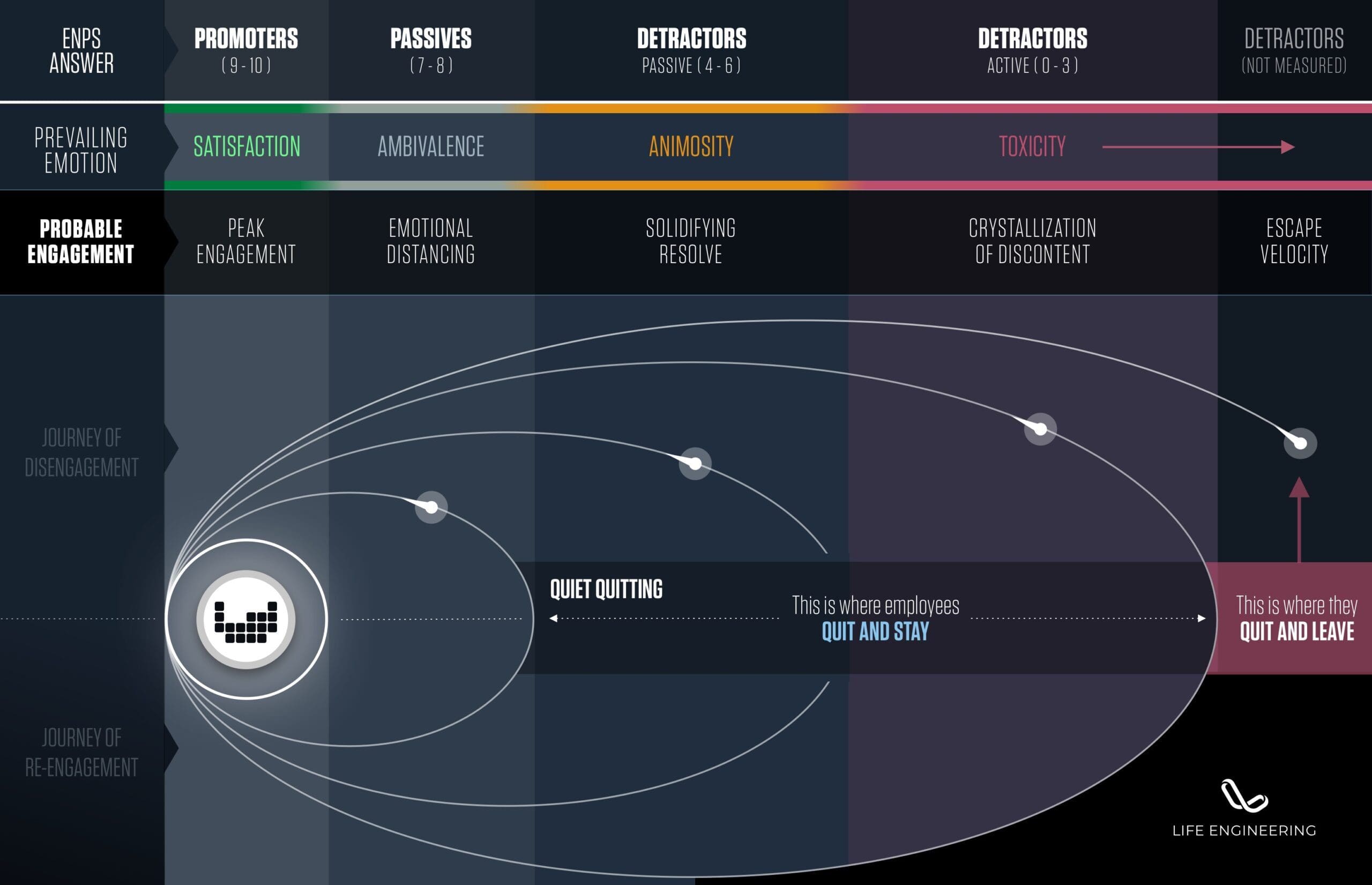To truly understand the Voice of the Employee and optimize according to that feedback, it’s critical to properly understand the difference between employee satisfaction and employee engagement.
While satisfaction is the superficial, overriding sentiment an employee has with where they work, engagement is the deeper emotional draw the employee feels for the actual work they do.
employee satisfaction and engagement
Extending the ESS model even further, you can see that the stages of sentiment and their prevailing emotions map directly to the extensive research we’ve done into employee engagement and disengagement.
Employee Sentiment and Satisfaction are superficial (and often lagging) indicators of Employee Engagement, which goes much deeper. But these are very different, and while there is often correlation, sometimes that correlation is loose. See the page on Employee Satisfaction for more on this.
The value of this direct-mapping capability is that it facilitates your ability to use ENPS coupled with ESS as a frequent, lightweight means of measuring the landscape of sentiment in your teams and organization.
The results that come back will be mapped along a familiar spectrum of sentiment that may signal a corresponding stage of disengagement. This can trigger a more in-depth engagement survey to see how deep the problem goes and to identify what’s behind it.

quiet quitting
Notice that whether you’re looking at the ESS stages of sentiment or the deeper stages of engagement, you’ll see that your Passive Detractors and your Active Detractors are those who are likely to be in a state of “quiet quitting.”
Quiet Quitting simply describes disengagement, when an employee emotionally detaches and pulls away. They simply stop caring, and that Ambivalence turning into Animosity starts to show up in their work.
Quiet Quitting can be incredibly costly to an organization, as so much of our performance rests upon the emotional energy we put into our work.
Of course, Quiet Quitting can graduate into where employees actually quit and leave, but when they quit and stay… this can be even more dangerous, especially because of the cultural and behavioral toxicity inherent to the later stages of disengagement.
satisfaction vs engagement
As you plan your measuring cadence, it’s important to remember that satisfaction is different than engagement.
Someone can be reasonably satisfied at work, but not engaged in the work they do. They won’t likely show up as either a Promoter or a Detractor, but rather a Passive, causing their score to not count.
A lot of times employees who are quiet quitting are in this category. They’re content enough to stay, but they’ve lost engagement in the work they do.
For more about understanding the difference between employee satisfaction, engagement, and performance, see the Principle page on Employee Satisfaction here.


Responses